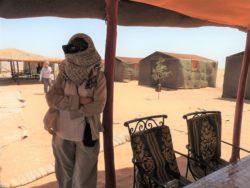
Where in the world is Morocco and why go there? Morocco is a coastal, mountainous, and partly desert country perched on the northwest corner of Africa. This year, about two months ago, we went to the desert on a horse with no name … oh wait, it was a four-wheel drive jeep.
If you’ve seen Lawrence of Arabia, you’ve seen Morocco. Its west coast borders the Atlantic Ocean; part of the northern coast faces the Mediterranean Sea. The Sahara is east of the Atlas Mountains. Sahara means desert, so now I just say Sahara.
Side note: Our bus ride on the twisting roads over the mountains reminded me of when, in 2001, Hoyt drove the two of us around the Peloponnese Peninsula in Greece. I can still see him steadily navigating hairpin turns on steep roads, some without guard rails. As in Greece, in Morocco we were happy when that harrowing part of the journey was over.
Morocco is a land famous for spices, leather goods, and mosaic art gorgeous beyond belief. It’s a 99% Muslim country whose people speak three main languages: Arabic, French, and Berber. The Berbers have inhabited the area we call Morocco for hundreds of years. Our guide, Mustapha, was a Berber who knew the landmarks, the desert, and the cities inside out.
Note: At the end of this post is a photo gallery from part of the trip. Later, I’ll post one or two more blogs for additional photos without much commentary.
Why did we go there?
First, why do we travel at all? To experience a different place, learn from and about a different culture, and give ourselves a chance to embrace the unexpected. I’m grateful we can learn this way and share what we find out about how people in other countries conduct family life, make art, cook food, make a living, experience politics.
As for why we chose Morocco, Hoyt and I have friends who recommended going. One friend is from Fez, a major Moroccan city. Other friends have studied the fascinating culture, making many trips to do that. Their reports on the beauty, complex history, fabulous art, and exotic food piqued our interest.
What kind of government does Morocco have?
The government has changed over many years. Wikipedia tells us that currently, “The Moroccan Constitution provides for a monarchy with a Parliament and an independent judiciary. With the 2011 constitutional reforms, the King of Morocco retains less executive powers whereas those of the prime minister have been enlarged.” During our tour, we visited the king’s palace in Fez, but could go only up to the gate. BTW, no visitors are allowed inside any of the king’s palaces (about 55 of them) at various sites around the country. We posed for photos outside the gates and peeked through the crack in the doors!
Morocco gained its independence from France in 1956, and in some cities like Fez and Casablanca, you still see architecture reflecting the French love of wide boulevards and leafy trees.
Who took us, who else went?
Usually we travel on our own, but given the extensive itinerary, the fact we don’t know the language, and that Hoyt (and I) preferred not to drive in a land so unfamiliar, we chose to go with a group. And I’ll bet we learned a lot more than we would have otherwise, thanks to our experienced and patient guide.
For sixteen days, our Moroccan guide, competent and knowledgeable (understatement), opened our eyes to the riches of the Moroccan culture and geography. He represented Overseas Adventure Travel (O.A.T.), the company that, a few years ago, took Hoyt and me to Santiago, Chile, then Easter Island, Cape Horn (at the tip of South America), Patagonia (an area across southern Chile and Argentina), and Iguassu Falls (on the Brazilian and Argentinian border).
Note: I wrote blogs about that trip; they are stored on my website, along with every blog I’ve written. You can begin reading about that Wilderness series by clicking here.
An expedition, not vacation?
I call trips like this an educational expedition. Parts of the trip were arduous, especially in the desert. I brought no dress-up clothes. I wore no makeup (risky, I know). Except for a couple of hours in a hotel, I wore my hiking boots the entire time. Oh yeah, I admit it … I kicked them off during our farewell party. I jitterbugged barefoot in Marrakesh. Hoyt and I are still rockin’.
Along with fifteen other travelers from the U.S., we rode by bus (and four-wheel-drive vehicles in the desert) to the major cities of Rabat, Fez, Marrakesh, and Casablanca, and to villages and locals’ homes in between. We also stopped in Mollywood where Lawrence of Arabia was filmed, as well as more recent movies like The Gladiators.
What happened on our expedition?
Our activities list is extensive, so I’ll only give a few highlights. We visited a tomb of a Moroccan king, palaces of the current king, an ancient synagogue, several small village markets, stopped to meet a shepard and his family who lived in a nomadic tent home, and wandered through rabbit-warren streets in medinas. Medinas are ancient walled cities. Inside medinas, most houses are riads, which are built around a courtyard which may or may not have a roof on it. In Fez and in Marrakesh, our group was housed in riads inside medinas … sort of like Russian dolls, one nested inside another.
Our tour also included a visit to the oasis town of Ouarzazate, built by the French as a garrison outpost in the Sahara. We spent a wonderful afternoon at the Imik Smik Women’s Association for Rural Development that teaches girls and women life and work skills. At their store, they make and sell pastry and couscous, which they taught us how to make. Later, they hosted a lunch and henna ceremony when some of us had our hands decorated with flowery designs, and surprise—they dressed Hoyt and me in wedding clothes to celebrate our sixteenth wedding anniversary!
What about food?
We ate plenty of well spiced chicken and vegetables cooked in a clay pot called a tagine, which has an unglazed bottom and a conical top. For dessert, we were often served fresh, juicy orange slices sprinkled with cinnamon. I loved them and now prepare them at our house. Even while camping in the shifting sands of the Western Sahara, we still ate those menu items.
Sirocco winds of fate
If you remember The English Patient or Lawrence of Arabia, you probably remember scenes of sand storms—sirocco winds, known to reach hurricane strength. Unpredictable. While we camped two nights close to a sea of sand dunes near the town of Merzouga, the wind kicked up the first night. We’d climbed a sand dune to watch the sunset and were sitting on the spine of the dune, surveying the vast sea of dunes, like waves of a red ocean, when our guide yelled, “Stand up.” We did. You don’t mess with wind. I nearly blew over. In between strong gusts, we made it back to the jeeps but the velocity continued to increase through the night. For most of the night, I lay awake. Fine red dust blew through every seam of our tent, which shook as if the big bad wolf was huffing and puffing to blow our house down. The hanging light above the bed swung like a giant incense burner, back and forth above me. I lay there thinking, “Well, I’ve had an amazing life. I’m grateful. Adios.”
What other “interesting” things went on?
Other than that, adventures were basically calm. With O.A.T., travelers are paired with locals for “in-home dinners.” In Fez, before the Sahara escapade, we had a chance to meet a lovely family in their home and talk about real life in Morocco—its politics, religion, food, family life, etc. Our host family was a woman with three grown children, the youngest in high school, the older two, young women, in university—one for medical training, the other for finance. Not long before this, they’d lived in Fez’s medina (old walled city), but now, in their modern condo outside the medina, they have more room, even an extensive garden in the backyard. They said they like this change, but miss the close community they enjoyed with nearby friends in the medina. One reason they moved was for quicker access to transportation to work and school. Other families, too, welcomed us, including a nomadic one living in an adobe house in the Sahara, raising their kids. Yes, in the unpredictable, sand-swirling Sahara.
What impressed me the most? Art
Art. Mosaic art and various carvings were everywhere, most notably on the walls of mosques, palaces, riads, and old restaurants. We saw tiled walls, floors, walkways, and ceilings all over the country decorated in stunning geometric designs and flowers. Art of every kind in Morocco is beyond interesting, it’s breathtaking. We stopped at a factory to see how masterful mosaic tile work and pottery is made, toured a tanning factory where they dye leather and make expensive jackets and purses, and learned that fossils are often discovered (the Sahara used to be covered by the sea ) and made into artistic tables and other objects of art, which we saw. We also explored Roman ruins where ancient mosaic floors are still visible.
All that artwork is a spectacular testament to the dedication and imagination of Moroccan artists.
What about writers and Morocco?
Writers have been attracted to exotic Morocco for a long time, i.e. the Beat Poets during the 1950s and 1960’s who camped in the town called Tangier. Here’s a bit from the O.A.T. website:
Ex-pat writers in Morocco by David Valdes Greenwood, for O.A.T.
“Paul Bowles, the American ex-pat writer most inextricably associated with Morocco in the minds of many Western readers, once described how it was that he first became hooked on the North African country he would eventually call home. ‘What I saw … awakened a wish to see more, a wish which seemed to grow even as it was being satisfied.’ Morocco, with its blend of indigenous Berber traditions, Arab influences, and European arrivals, is at once sophisticated and exotic, a heady feast for the senses with a rhythm all its own. It’s no wonder then, that, like Bowles, so many of the 20th century’s greatest writers were drawn there.”
What was our itinerary?
We flew into and out of the port city of Casablanca made famous by moody Humphrey Bogart and gorgeous Ingrid Bergman. Today, Casablanca is a bustling metropolis of four million people. And, as in the movie, there’s still a Rick’s Cafe. But I’m getting ahead of myself …
After landing in Casablanca’s airport, we rode directly to Rabat, the country’s capital. After that, on to Fez, with its rabbit-warren style medina and to Volubilis & Meknes, both World Heritage sites. Afterwards, the village of Rissani, and then over the Atlas Mountains to the Sahara camp for two nights of a mighty sandy experience. Post-desert, we headed for Marrakesh (no, we didn’t board a train, we rode a bus) and finished in Casablanca with a tour of the third largest mosque in the world.
For the O.A.T. itinerary, click here:
Impossible Reportage
It is impossible for me to capture this two-week experience in a blog post or even a few of them. Although I don’t have official credentials for photo journalism, in the photo gallery below, I offer visual highlights. Maybe one day I’ll write a long piece for a magazine or a book. For now, what I’m learning is that for most travel blogs, people want pictures, pictures, pictures. I hope you enjoy the few I selected. We took more than two thousand!
You can start the slideshow by clicking on the first photo.
See you next time!
Your writer on the wing,
Charlene
Note: Due to space limits, more photos will come in another post or two with few words.

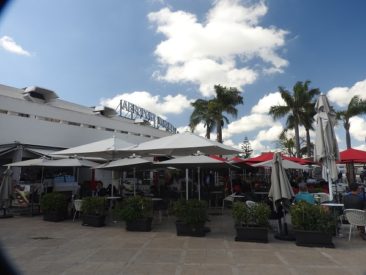
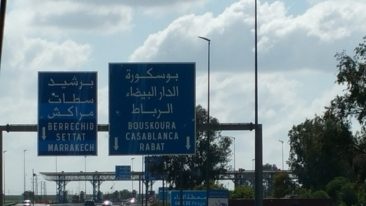
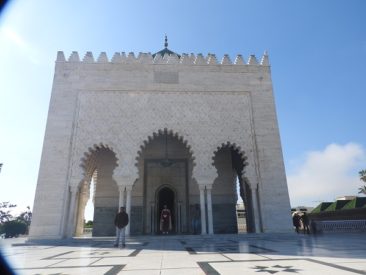
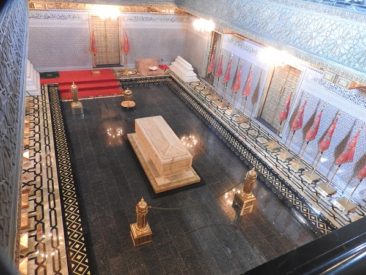
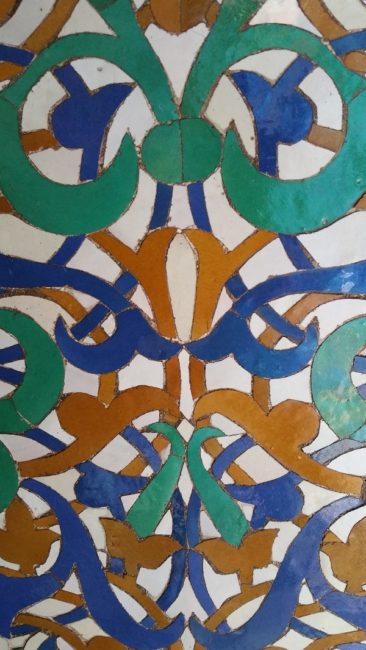
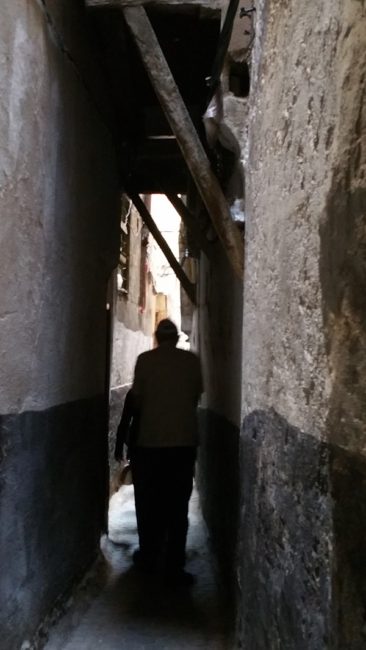

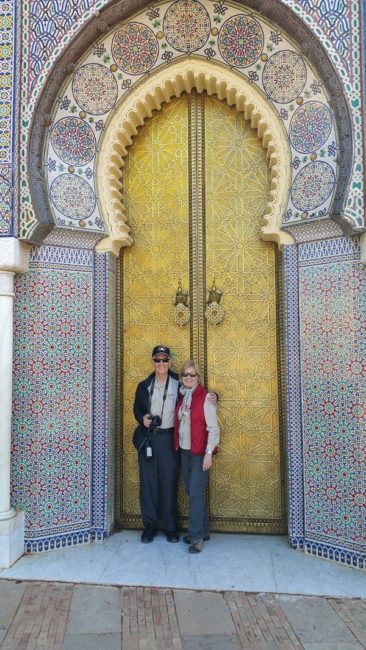
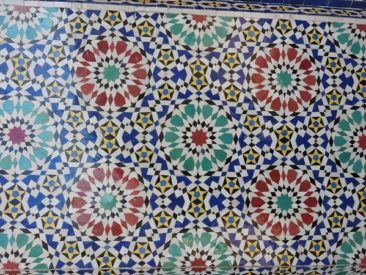
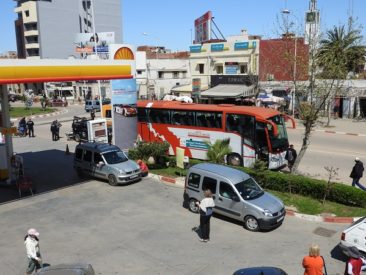


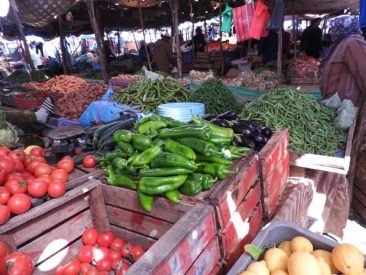
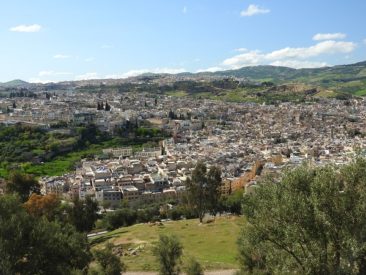
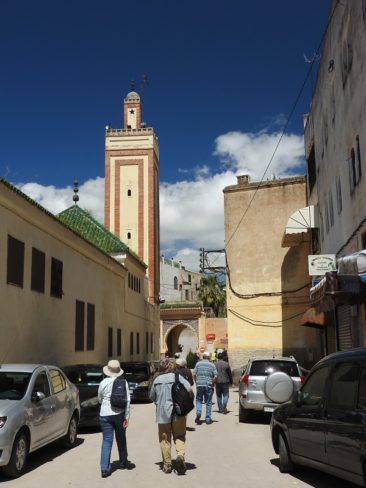
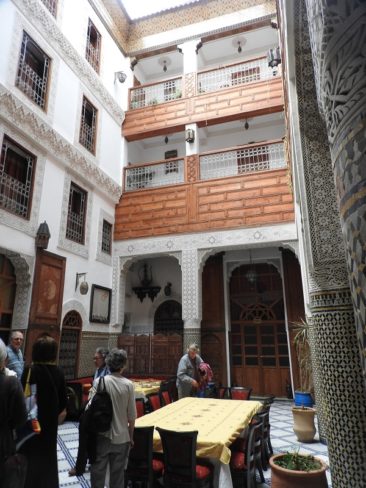
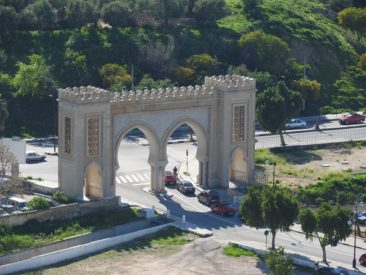
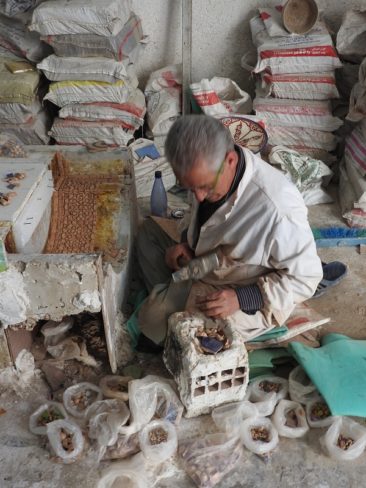
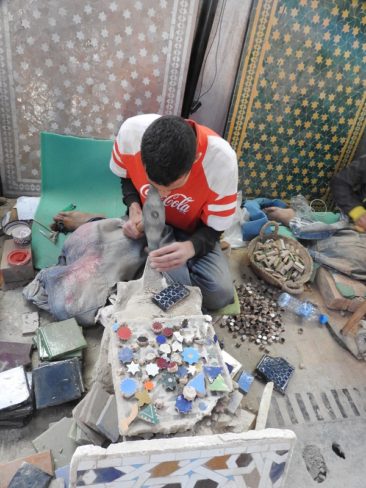
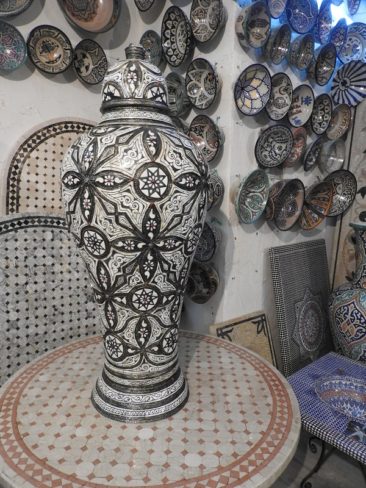
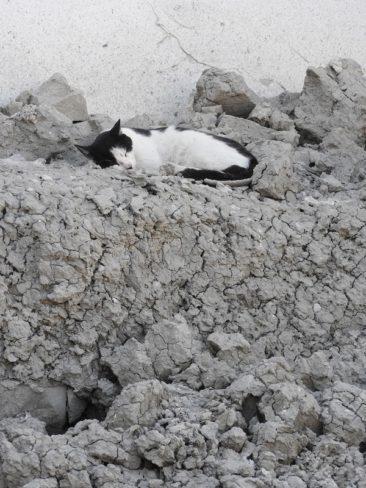






Kate Reich
Well,the night I arrived in Denia, Spain,across from Ibiza, a strong storm landed and dumped reddish brown Saharasand overeverything, red roses became brown, so did the black car, people were frantic. The last Sahara storm happened 4 years ago. Windows were no longer see through windows, it wa a mess. This happened three nights ago,
Charlene L. Edge
Wow, three nights ago! Hope the rest of your trip is AOK!
Carol Megathlin
Charlene, I absolutely loved this post, particularly the visual details. You and Hoyt jitterbugging barefoot in Morocco, sitting on the spine of a sand dune gazing over a sea of them, the lamp swinging all night like a censer. You took me there! One question: on all your exotic travels, do you ever get queasy stomachs from the local fare? Love you both, Cousin Carol
pat schrader
Thanks for sharing all this, really enjoyed being a part of your travels.
Charlene L. Edge
Hi Carol, glad you enjoyed this one so much. Lucky for us, tummy upsets have been rare and mild. I take ginger tabs or chew ginger gum sometimes when motion sickness is on the horizon, like during that mountain ride when we took those hairpin turns.
If we’re in a country like Morocco where it’s not safe to drink the tap water, even while brushing teeth, we are meticulous. We avoid raw salads, which most likely are washed with local water. We stick to cooked food and don’t eat street food.
Buying bottled water can be tricky, so we check the caps to be sure they weren’t glued on bottles recycled with local water.
But I admit, I bring practically every remedy known to mankind with us. In our travels, Hoyt is the tour guide, I’m the health and safety officer. 🙂
Linda Goddard
Dear Charlene,
Thank you for sharing your trip! Great pictures!
Susan Tepper
Fabulous !!! Thank you for this indepth ‘look’ that you don’t read in any travel guides.
Charlene L. Edge
June 18, 2018: You’re most welcome, Susan! Hope you read Part 2 and Part 3, also, which are mainly photos that show what I talked about in this post. They are now published on my website at https://charleneedge.com. In the Search box on any page, type Morocco. They’ll show up.
Cheers!
Suzanne
Thoroughly enjoyed your trip details. Your descriptions made me feel as if I were there in person. The photos are magnificent and appeal to my sense (and pursuit) of art as well. Congratulations to a very talented writer and more important, a great, sharing person. I may try oranges with cinnamon, too!
Charlene L. Edge
Thanks for reading! Glad you enjoyed this. Part 2 and 3 are now published, too. They have lots of photos.